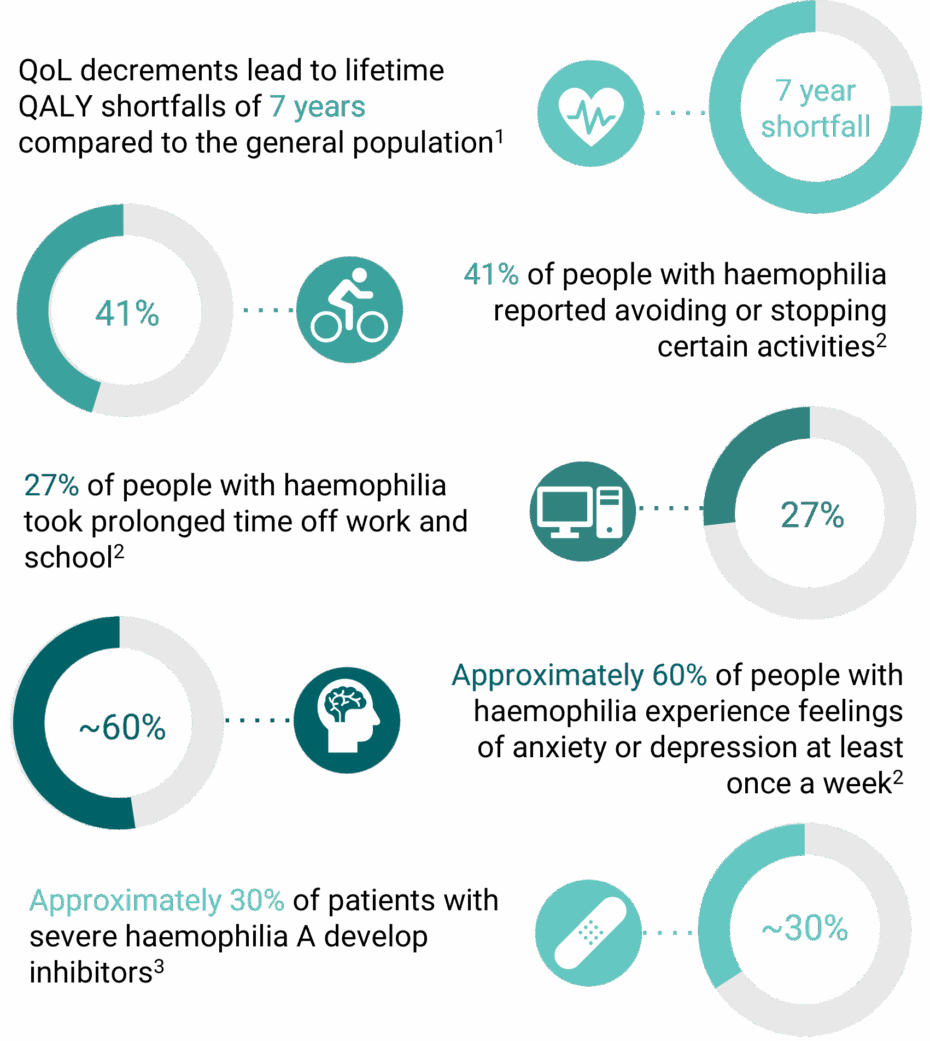Pharmaceutical innovation is a key driver of improvements in health outcomes, quality of life and productivity for people with acute and chronic conditions.
Key takeaways
- Pharmaceutical innovation is a key driver of improvement in health outcomes, quality of life and productivity for people with acute and chronic conditions.
- In haemophilia, continued investment in research and development has led to the development of a number of innovations, each with unique benefits to patients.
- New treatments provide patients with multiple options, meaning they can make treatment decisions based on their clinical needs, physical activity level, and lifestyle. These benefits also have spillover effects on carers, family members and wider society.
- Haemophilia thus provides an exemplary case study of how continued investment in pharmaceutical innovation can transform the lives of patients and carers
- Yet, despite an impressive array of treatments, there is a remaining unmet need. People with haemophilia may experience pain, joint damage, and mental burden due to their condition, necessitating further innovation and new treatments.
This progress has been exemplified in the context of haemophilia, where iterative and incremental innovation has added significant value for patients and health systems. New treatments have transformed the lives of people living with haemophilia from a life expectancy of around 30 years in the 1960s to a life expectancy at present comparable to the general population in developed countries (Mannucci, 2020).
The impact of innovation on haemophilia
In haemophilia, continued investment in research and development has led to the development of a number of new innovations, each with unique benefits to patients. These include reduced treatment burden, improved adherence, and improved quality of life, including greater ability to partake in physical activities and to achieve major life goals. Further, new treatments provide patients with multiple options, meaning they can make treatment decisions based on their clinical needs, physical activity level, and lifestyle. These benefits also have spillover effects on carers, family members and wider society. Haemophilia thus provides an exemplary case study of how continued investment in pharmaceutical innovation can transform the lives of patients and carers.
Yet, despite an impressive array of treatments, there is a remaining unmet need that requires further innovation (Figure 1). People with haemophilia still experience pain, joint damage, and mental burden due to their condition. Indeed, the aspiration for many people with haemophilia is to live with a haemophilia-free mind.
Where next?
All stakeholders have a part to play in ensuring a healthy innovation ecosystem, allowing innovation to continue transforming patient lives. For example:
- Developers, manufacturers, and researchers must continue to invest in R&D, leveraging feedback loops of return on investment and scientific spillovers. R&D should be directed towards innovation that is of the highest value to society, as signalled by pricing and reimbursement policy.
- Governments, regulators, and HTA bodies must foster a supportive policy environment that recognises and rewards innovation, including intellectual property protection, transparent approval requirements and processes, and pricing and reimbursement policies that incentivise and reward the types of innovation that are of greatest value to society.
- All stakeholders should facilitate patient involvement throughout the development and assessment processes to ensure that unmet need and patient voice are appropriately considered.
Within haemophilia, pharmaceutical innovation has significantly improved care, but considerable unmet need remains. To further advance the research agenda in the haemophilia space:
- Patient advocacy groups should leverage their unique position to package and communicate information about innovative treatments to overcome the knowledge gap experienced by health care professionals and patients, thereby removing education and understanding as barriers to access to innovation.
- Health economics and outcomes researchers should explore the depth and complexity of the factors that contribute to remaining unmet need in this space to enable innovation to target the aspects of unmet need that are most important to patients.
- Policymakers, including HTA bodies, should continue to improve and refine their polices to provide appropriate incentives and rewards for innovative haemophilia care.

Figure 1 Unmet need in Haemophilia
This consulting report, Investing in Innovation: A Spotlight on Haemophilia Therapies’, was commissioned and funded by Pfizer.
Citation
OHE uses IP2Location.io IP geolocation web service for pages which are restricted to certain locations.






